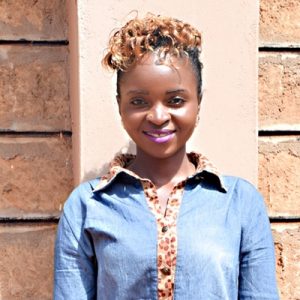AIC Kyome Girls' Secondary School was established in 1988 as a community school with funds from the parents and Africa Inland Church. The government absorbed the school through the District Education Board and is currently a primary contributor to the school growth. The school has experienced moderate growth in terms of school population, with 218 girls in attendance today, many of whom board overnight at the school.
Unfortunately, access to water has not grown at an acceptable rate. The tanks installed over the years are not nearly enough to sustain the school and its staff throughout the year. In fact, water only lasts for a few months a year. This forces the school to purchase water from vendors based more than 70 kilometers away from the school. They must pay for the water itself and the transport, a cost that is not sustainable for the long term.
"Sometimes, it is difficult to bear the thirst a whole day due to water insufficiency," said Julius Joseph, a 14- year-old student at the school.
Water is delivered only twice a year in order to save money. As a result, there is strict rationing of the supply, especially as it gets closer to the next delivery and the water is close to running out. Agnes Muthangye said that there are stretches when the girls cannot bathe nor wash their clothes due to the water shortage.
"It gets very uncomfortable," she said.
The school is doing their best to manage a clean and conducive environment for studying. However, there needs to be an improvement in handwashing and cleaning of the latrines, but that is not possible until they get a reliable supply of water.
Here’s what we’re going to do about it:
Rainwater Catchment Tank
We will build a 104,000-liter rainwater catchment tank for this school. This water will benefit the students, teachers, and supplementary staff. Parents will mobilize the materials needed for construction, such as sand and stone. They will also lend some strong arms to help with the actual construction.
The huge capacity of this tank makes the others look tiny in comparison; 104,000 liters should be enough water to alleviate the strict rationing and need to purchase water. As soon as the tank has time to cure, it can begin to collect rainwater for drinking, cooking, and cleaning!
Training
Students and staff will be trained for one day. Those in attendance will form a school health club that will promote good hygiene and sanitation practices both at school and home. They will learn all of the steps to proper handwashing, how to treat water, and how to keep their environment clean. The school will also be taught how to best oversee and maintain their new rainwater catchment tank and handwashing stations.
Handwashing Stations
Three handwashing stations will be delivered at the project’s completion. These are 1,000-liter plastic tanks fitted with four taps. The health club and school management will be responsible for making sure tanks are filled with water and that a cleaning agent such as soap or ash is available.

 Rainwater Catchment
Rainwater Catchment
 Rehabilitation Project
Rehabilitation Project































